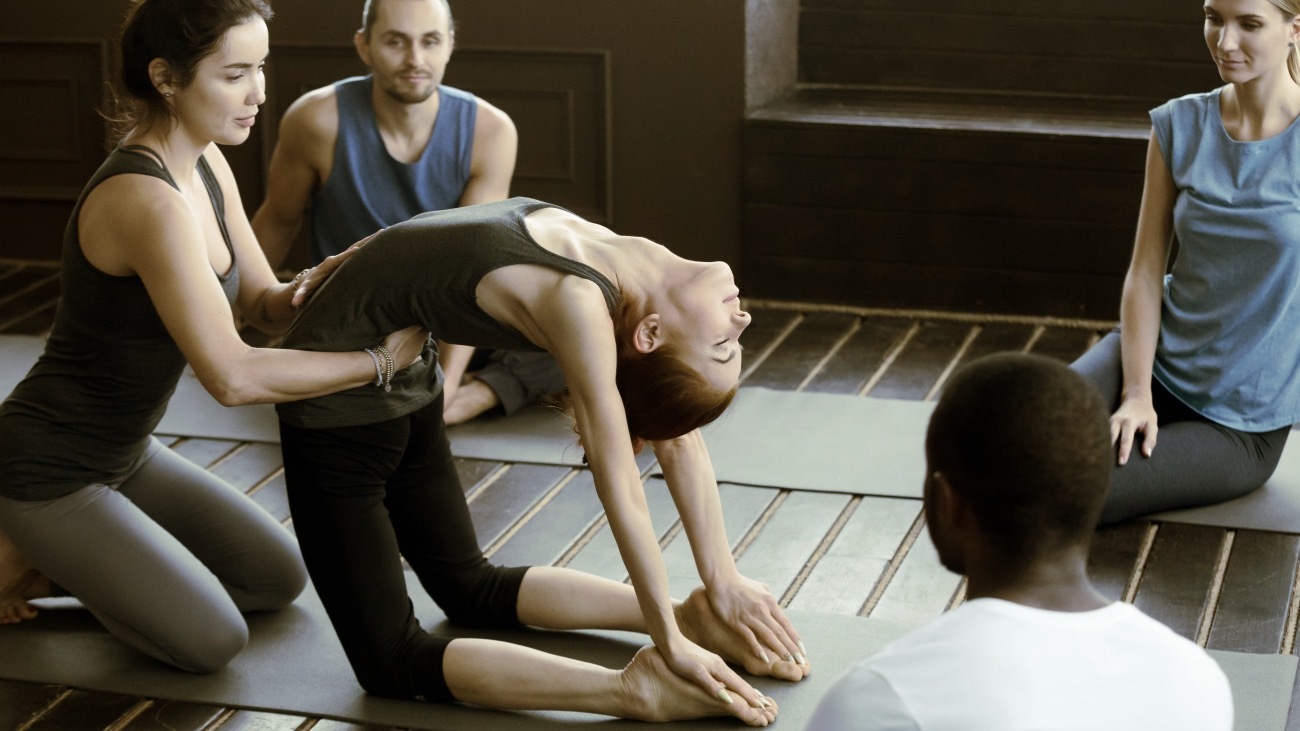Yoga Alliance Professionals

Had you asked me how to conduct a teacher training online 3 months ago, I would have replied that it was an impossible undertaking. After all “How can you replicate an in-person (foundation) training in an online format?!”
This is the very question many yoga trainers are now asking themselves, as social distancing measures prevent the continuation of teacher training courses as we know them. Within days of the lockdown being announced, course outlines were redrafted, dates rescheduled and Zoom subscriptions paid for as trainers assessed how they can continue to make a living during the Coronavirus pandemic.
As it turns out, carrying out an online teacher training course is not an impossibility, as my incredulous response would have at first suggested. It does, however, require a great deal of forethought, preparation and creativity in order to meet the same high standards as those expected of in-person trainings. Below are some suggestions for how this can be achieved during the lockdown.
Although the way you deliver your course may have changed, the course content should remain as close to the in-person syllabus as is possible. Of course, an exact course replica may not be possible online, however, the same topics and modules should be covered. Doing so not only maintains the quality of your training but will also guarantee our graduates are eligible for insurance with Yoga Alliance Professionals. As it stands, our insurance provider, Balens, will provide cover to graduates from online courses where we have approved the in-person syllabus. Want your syllabus approved? Chat to us here
It is for this reason that all online courses should follow the same in-person requirements:
What do contact hours consist of when we cannot physically be in contact with one another? Here contact hours refer to time spent in the lead teacher’s presence, which for most trainers will mean live streaming or anything carried out in “real-time”. While ideally 90% of the course should be carried out as such, it may result that some modules work well as pre-recorded sessions.
It is inevitable that some aspects of the training will change. Firstly, given the current changes to the yoga teaching profession, it is likely that teacher training courses will (soon) need to include guidance on how to teach online. Likewise, more information on insurance policies for online yoga classes may feature more heavily in yoga training going forward.
Certain modules cannot be successfully transferred online. Adjustments and correct alignment fall within this category and as such, do require face-to-face training. In the current climate of social-distancing, the best solution seems to be to carry out such modules online and then arrange for an in-person workshop or further training course for your students post lockdown.
Whereas 8 hour days may fly by for an in-person training course, the same cannot be said for the same length of time spent at a screen. Breaking the days into smaller segments of around 90 minutes works best for boosting student engagement and concentration. Adjusting the course structure to optimise your students’ learning for an online platform is more than okay.
Given our current situation, you may look to prioritise theory-based elements of the course now as these more naturally fit an online platform. Your “non-contact” hours could then take up the hours spent in lockdown, whereas, as social distancing measures lessen, you could begin the “contact hours” of the training.
As with many things online training, it’s important to get creative with trainee teaching practice. Whether you use Zoom’s “breakout rooms” to group students to teach one another, request a recording of your trainees teaching fellow house-mates or, failing that, an arrangement of cushions, there are plenty of ways to get in the all necessary teaching practice.
From our perspective, we are still able to offer trainee insurance to your trainees, providing that they follow the policy conditions. You can read more on this here. This will allow your students to practice teaching online for the duration of the course under the same requirements as our full yoga teacher insurance.
While physical meetups remain an impossibility, creating course discussion groups via Whatsapp or Facebook generate a sense of class connection. Doing so also enables students to offer teaching advice and feedback, and discuss course modules or relevant topics. Additionally, you may wish to set up individual Zoom calls with your trainee to go over areas for development or feedback for their teaching. Where possible, seek to retain that element of class community and student support that so often make a teacher training course.
And when the pandemic is over? What then? It is hard to say anything for certain. This is untrodden territory for all of us and it is likely a “new normal” will emerge from the pandemic. As for now, we are pleased to be able to support our trainers to continue making a living, while remaining committed to upholding the quality and integrity of yoga teacher training.
These Stories on stay at home
10 Beaverhall Road,
Edinburgh,
Scotland,
EH7 4JE
Copyright © 2025 Yoga Alliance Professionals Ltd. All Rights Reserved. Terms of Use | Privacy Policy
YOGA PROS ORGANISATION LIMITED, trading as YOGA ALLIANCE PROFESSIONALS, is a Not for Profit Scottish Company number SC502923
No Comments Yet
Let us know what you think